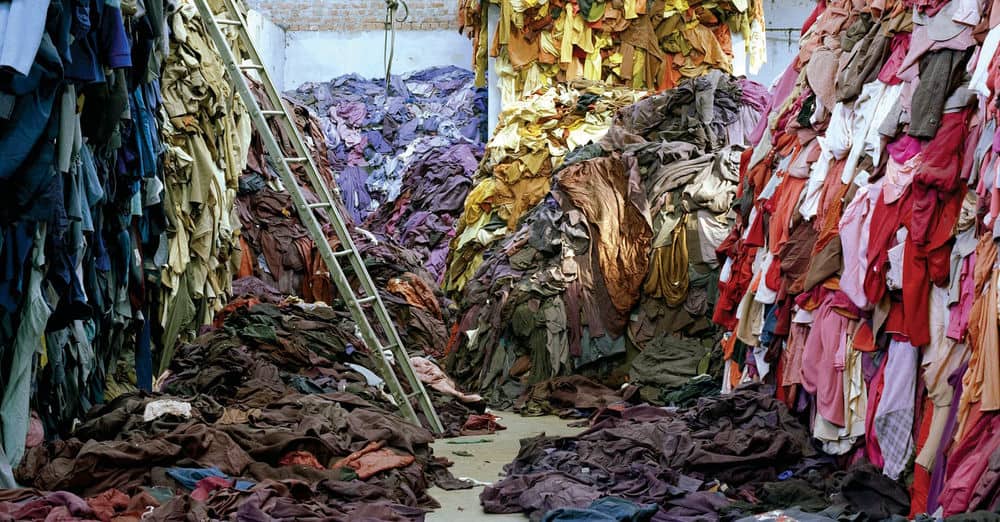
There is a term for the practice of disposing of used textiles in economically under-privileged countries. Activists refer to it as ‘waste colonization.’ While the western fashion industry is held largely responsible for this, consumers carry equal blame. As we continue to buy into large corporations’ vocabulary of take-back programs and recycled collections, we remain ignorant of the ugly truth: not all donated clothing has re-sell or recycle potential. All the rejects (50-70% of donations) are exported. In this journey from disposal to dump, our clothes traverse the globe in an invisible supply chain, affecting livelihoods and environments.
Tracing the journey from disposal to dump
Let’s take a virtual tour of the second-hand rejects’ market across a few African countries: In Kenya, locals visit the Mitumba market, which is Swahili for ‘bundles’ – a reference to the manner in which textile waste is shipped. In Ghana’s Accra, the Kantamanto market is also called Obroni Wawu, which loosely translates to ‘dead white man’s clothes.’ In Zambia they are called Salaula – ‘selected by rummaging.’
While every importing country labels these markets differently, they each enact a supply chain that embraces values from reuse to locally produced; a much-needed scheme in the global retailscape. According to Dead White Man’s Clothes, a US-based multimedia research project in Ghana, port towns receive huge bales of clothing rejects, weighing between 55- 90kgs. ‘Gamblers’ arrive to place bids, with a preference for UK bales. These are considered highest in quality and most profitable, as opposed to those arriving from USA and Canada, which are also cheapest to bid for.
The next step is manual segregation. Cue sorters, who divide the clothes into four sections, ranking from best to trash. The first pile (less than 20% of the total) contains deadstock and price-tag intact garments from pre-loved clothing retailers. The second pile is lightly worn clothing of good quality and the third selection is made up of damaged and visibly used items that require washing and repair. These garments are exchanged between menders, dyers, quality control and re-sellers, usually by means of barefooted female porters. Through re-commodification and extending the lifespan of garments, the locals have learnt to make the best of a worst-case scenario.
➔ Read the full article on Green Is The New Black
